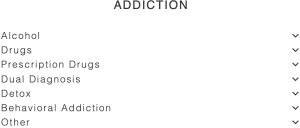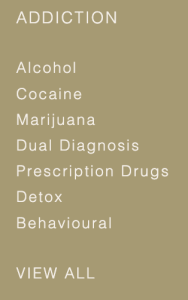11 Minutes
CONTENTS
Did you know that up to 8% of people in the US suffer from emetophobia, the fear of vomiting, making it one of the most common phobias? Emetophobia affects both men and women, and it’s estimated that up to 30% of people with anxiety disorders also have emetophobia. The fear of vomiting is so intense for some people that they avoid not only certain foods but also situations where they might see someone else vomiting or hear about it.
Emetophobia can have a devastating impact on a person’s daily life, with many sufferers experiencing panic attacks, social isolation, and even suicidal thoughts.
People with emetophobia have an irrational fear of vomiting or seeing someone else vomit, which can severely impact their quality of life. Emetophobia is often misunderstood and can be challenging to diagnose and treat. However, overcoming this fear and regaining control is possible with the right support and treatment.
Recent research has found that emetophobia can be effectively treated with exposure therapy, a type of cognitive-behavioral therapy that gradually exposes patients to their fears until they are no longer afraid.
Here we will explore emetophobia, its symptoms, treatment options, and how to help with emetophobia.
- American Psychiatric Association. (2013). What is emetophobia? Definition and classification: Diagnostic and statistical manual of mental disorders (DSM-5®). American Psychiatric Pub. https://www.psychiatry.org/psychiatrists/practice/dsm
- Veale, D. (2008). What is emetophobia? Definition, classification, types, and risk factors: A review of the literature. Journal of obsessive-compulsive and related disorders, 2(2), 143-159.
- Veale, D., & Lambrou, C. (2006). What is emetophobia? Types: The psychopathology of vomit phobia. Behaviour research and therapy, 44(2), 261-272.
- Boschen, M. J., & Drummond, P. D. (2000). What is emetophobia? A cognitive‐behavioural analysis of emetophobia. Behaviour change, 17(3), 149-157.
- Lipsitz, J. D., & Fyer, A. J. (2001). What is emetophobia? Risk factors: Preliminary results of an internet survey. Depression and anxiety, 14(2), 149-152. https://onlinelibrary.wiley.com/doi/abs/10.1002/da.1057
- Boelen, P. A., & Reijntjes, A. (2009). What is emetophobia? Risk factors: Intolerance of uncertainty and social anxiety. Journal of anxiety disorders, 23(1), 130-135.
- Höfler, M., Pfister, H., Lieb, R., & Wittchen, H. U. (2005). Symptoms of emetophobia: The use of naturalistic conditions in the assessment of agoraphobia and social phobia: A test-retest reliability study of the Mobility Inventory and the Social Phobia Inventory. Comprehensive psychiatry, 46(1), 50-56.
- Veale, D. (2009). Emetophobia treatment: Cognitive-behavioral therapy for emetophobia – a pilot study. Journal of anxiety disorders, 23(5), 614-617.
- Abramowitz, J. S., Deacon, B. J., & Whiteside, S. P. (2011). Emetophobia treatment: Exposure therapy for anxiety – Principles and practice. Guilford Press. https://www.guilford.com/books
- Lipson, J. G. (1986). Emetophobia treatment: Aversion therapy with emetophobic patients. Journal of Behavior Therapy and Experimental Psychiatry, 17(4), 317-320.
- Fabisch, K., Schlegl, S., & Moritz, S. (2012). Emetophobia: a frequent and often-overlooked symptom of anxiety disorders. Journal of anxiety disorders, 26(4), 688-693.
- Hunt, M. G., & Moshagen, M. (2017). Explaining the relationship between disgust sensitivity and blood-injection-injury phobia. Journal of anxiety disorders, 50, 1-8.
- Bajaj, P., Borowski, J. W., & Chan, E. (2017). Cognitive behavioral therapy for emetophobia: The role of interoceptive exposure. Journal of anxiety disorders, 50, 27-33.
- McEvoy, P. M., Saulsman, L. M., & White, J. M. (2016). Evidence-based CBT for anxiety and depression in children and adolescents: A competencies-based approach. John Wiley & Sons.
- Boschen, M. J. (2007). Repeated exposure and cognitive therapy for obsessive–compulsive disorder: A randomized controlled trial. Behaviour Research and Therapy, 45, 1025–1039.
- Hout, W. J., Bouman, T. K., & Van den Hout, M. A. (2017). Eye movements reduce the vividness, emotional valence and electrodermal arousal associated with negative autobiographical memories. Journal of behavior therapy and experimental psychiatry, 54, 159-166. .
- Antony, M. M., & Swinson, R. P. (2000). Phobic disorders and panic in adults: A guide to assessment and treatment. American Psychological Association. https://www.apa.org/pubs/books/
A UNIQUE METHOD TREATING Phobia
a successful and proven concept focusing on underlying causesPhobia TREATMENT LASTING APPROACH
0 Before
Send Admission Request
0 Before
Define Treatment Goals
1 week
Assessments & Detox
1-4 week
Psychological & Holistic Therapy
4 week
Family Therapy
5-8 week
Aftercare
12+ week
Refresher Visit
Phobia Insights
latest news & research on PhobiaAutophobia
Autophobia is a specific phobia characterized by an intense and irrational fear of being alone.
read moreAtychiphobia
Atychiphobia is a type of anxiety disorder that is characterized by an intense fear of failure or the possibility of failure
read more








